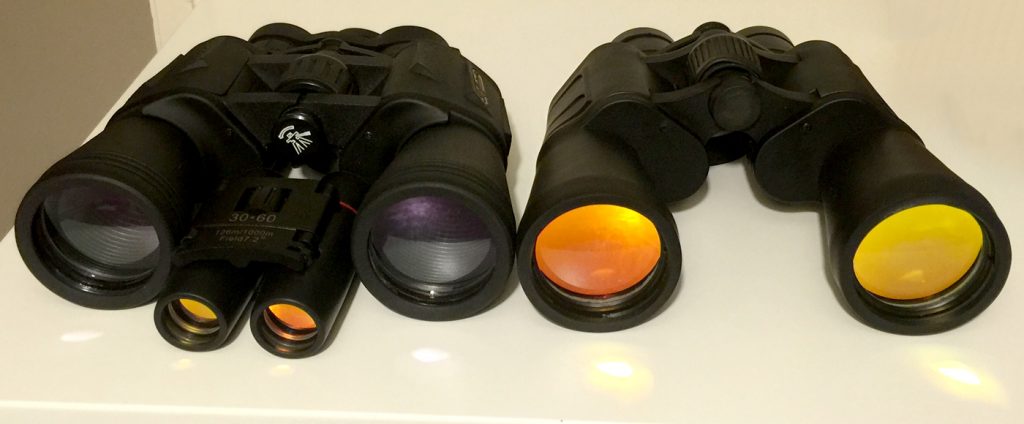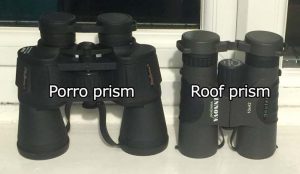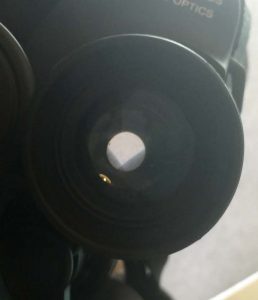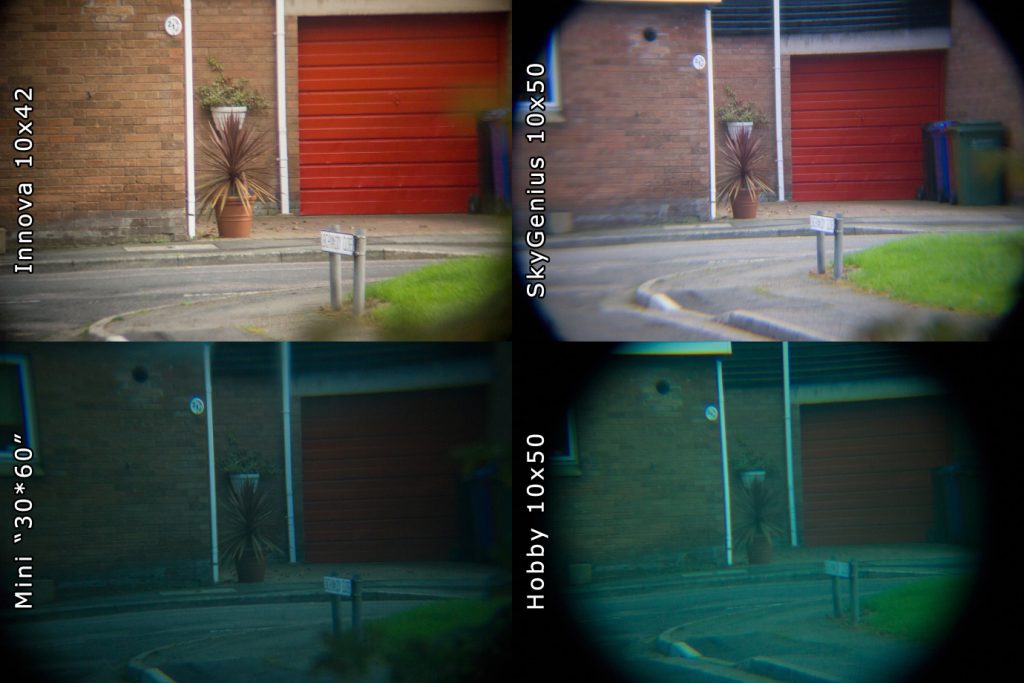Update: The “SkyGenius” binoculars listed below were renamed to “BRIGENIUS” and Amazon has banned me from reviewing them, even though my review was a 3-star one full with details and pictures. They are fine with just good reviews from clueless people to be shown, makes for better sales I guess…
Until recently Amazon allowed sellers to give (for free or a deep discount) an item to a customer in exchange for a review. “Review clubs” where formed where this would work systematically, with sellers viewing the profiles of reviewers to select where to send their items. As you can imagine, this led to “reviewers” happily giving 4-5 star reviews to anything that didn’t right-out collapse in their hands, in order to score free stuff. I had noticed that the previously very useful Amazon ratings were getting sort of funky and unreliable the last couple of years, and the worst cases happened in the more sophisticated products, where the average review club serial reviewer would anyway be unqualified to pass judgment. At one point I noticed that Amazon was full of “30×60” binoculars, which, magically (for a set that claims 60mm objective lenses in the title), could fit in the palm of your hand! In some listings they even claimed night-vision! With these charactersitics and their stellar reviews they are the second most popular binoculars on Amazon.co.uk (fortunately they are a little less popular on Amazon.com). So I ordered a set. Then, I signed up in a review club myself, and got a discount on one of the most popular 10×50 sets and also I borrowed from a friend another cheaper, popular 10×50 set and reviewed them all. The spoiler is: don’t buy no-name binoculars based on dubious reviews, and especially avoid anything “ruby lens”, “red membrane” etc. I’ve left reviews on Amazon and some are prominent enough to spare some people from garbage purchases, although others get rather inexplicably voted down and disappear from the first page (I’ve been contacted by people who get stuff from seller for free to tell me the sellers ask them to down-vote me). My “Hobby Store” review actually pissed off the seller and there were some exchanges and wild accusations (they sort of apologized in the end)… Anyway, here’s what I gathered to put to the test:
Some Binocular Basics
There are a few basic things you should know about when choosing binoculars and are needed to fully understand the tests that follow.
- Aperture and Power: When a binocular is listed as “10×50”, the first number refers to its magnifying power (10x) and the second to the aperture, i.e. diameter of the objective lens in mm (50mm in this case). Unlike what you might expect, we don’t really want binoculars to have too much power, as it makes them harder to hold steady (many people claim 10-12x is the most you can hold, I prefer 7-8x) and also darkens the image for a given aperture (twice the power requires twice the aperture for the same image brightness). In fact aperture is probably more important because as it increases it gives you more brightness (which may allow for higher magnifications) and more resolution. The obvious downside for big aperture is size/weight and cost. For astronomy, aperture is even more important and some of the most popular entry level binoculars are 7×50 or 10×50 (harder to hold steady), while bird-watchers usually go with more compact sets like 10×42. Note that there are variable zoom binoculars (e.g. 12-20×80 etc). I have never heard of a variable zoom binocular set that was good.
- Exit pupil and eye-relief: A factor that further complicates choosing a binocular set is the diameter of the light cone that comes out of the eyepiece, called the “exit pupil”, since we’d want it to fit our pupils entirely (otherwise there will be vignetting at the edges of the field). The exit pupil is the aperture divided by the magnification, so it is 5mm for 10×50 binoculars and about 7mm (50/7) for 7×50 binoculars, while our pupils at night dilate to about 7mm when we are young, but less when we are olders. So while 7×50 with a brighter image might be the best choice up to a certain age, older people might be better off with 10×50 or 8×40 etc, as a 5mm max pupil is more common after our 50s. Eye-relief on the other hand is the distance from the eyepiece that your eyes need to be so that you can see the entire field of view. Ideally you’d want a generous eye-relief (say 12mm or more) with rubber eye-cups that hold your eye into the correct distance, while they can roll down so that you can use eyeglasses.
- Field of view: Markings on binoculars such as “315ft @ 1000yards” or “105m @ 1000m” or “6.0°” all refer to the real field of view. Coincidentally, all three example values refer to exactly the same field of view, which is 6 degrees and also means that an object 105m long will exactly fill your field of view if it is at a distance of 1000m. As you might understand, comparisons of real field of view should only be made between binoculars of the same magnification, otherwise we multiply the real field of view (in degrees) with the magnification to get the “apparent field of view” (also in degrees), which is a rather more useful value for comparing binoculars (and if you know about eyepieces you are familiar with it already). Binoculars with 60 or more degrees of apparent field of view are considered wide angle and give you a nice, immersive experience. Binoculars that have less than 50 degrees apparent field of view on the other hand are a bit like looking through long tunnels. Wide angle binoculars in general need to have better quality optics to give you sharp images with little chromatic aberration (that’s the bluish or reddish tint at the edges of bright objects).
- Coatings: Glass surfaces are normally reflective, which is not a good thing for optics, so special chemical layers are applied to reduce reflections. If a binocular or another optical instrument is called “Coated (C)”, it means that at least one glass-to-air surface is covered with one such anti-reflective layer. Then, “Fully Coated (FC)” optics means that all glass-to-air surfaces have a single layer coating, “Multi-Coated (MC)” have at least one surface with a multi-layer coating (doesn’t specify if the rest are coated or not) and “Fully Multi-Coated (FMC)” optics have multi-layer coatings on all surfaces. In this test we find out that apart from anti-reflection coatings there are orange “coatings” that actually increase reflections and are normally appropriate only for sunglasses.
- Prisms: Binoculars are generally divided in two categories, depending on what kind of prism they use. The more compact, straight-barrel binoculars use “Roof” prisms, while the other type, the “Porro” prism with it’s S-shaped lightpath gives binoculars the more “classic” shape. Roof prisms apart from compact make binoculars that are easy to waterproof, so they are often preferred for nature watching etc, however it is much harder to make a good roof prism than it is to make a porro prism, so at the same price-range you have a better chance finding a good porro prism set. In fact, for astronomy even a well made roof prism will not be as good as a porro prism unless it has “phase coatings”, which further increase the price (so unless you have a really high budget stick with porro for astronomy). Another aspect of the prism construction is the glass it is made of. The most common and lower cost “BK7” glass is normally lower quality than the “BaK4” glass. I say normally, because I’ve seen great BK7 binoculars, due to excellent manufacturing, and BaK4 sets that suffered – so it is not just the material, it is also important how you use it. In any case you can tell a binocular has the cheaper BK7 glass by holding them away from your eyes pointed at something bright and uniform (e.g. the sky) and noticing a sort of a square shadow near the edges of the round exit pupil (see pic).
The Contenders
- Mini (various names) “30×60”: Cleverly, they say “30*60” on them, so the manufacturer can perhaps claim “I never said they were 30×60”. But that’s the claim of most sellers. Of course they are nowhere near 30×60, the objectives measure 21mm, their magnification is about 8x so normal people call them “8×21”. They are made of a rubberized plastic with a really strong smell (“stink” more precisely) that doesn’t seem to go away even after a month or two. Some listings have them as “night vision” (and even “infrared night vision”) but they, of course, are no such thing. They have a coating on one lens surface, the bright orange “ruby” coating, to the detriment of the visual quality as we will discover.
- SkyGenius 10×50: These are the most expensive of the trio. They are very popular on the UK Amazon and they do seem like OK build quality on first look, although the focusing is not very smooth like on “proper” binoculars. The good thing is that they don’t have “ruby” coatings and in fact are fully (but not multi) coated, as far as I can tell.
- Hobbystore UK “General Use Good Quality” 10×50: One of the most popular binoculars are the “Serious 10×50” from Hobbystore. I did not want to spend £30 for them, so I got their, admittedly inferior, £9 set instead, which still has great reviews. It is a bit behind the SkyGenius in build quality (e.g. some thick plastic retaining rings on the objectives), and, more importantly, has the same “coating” as the 30×60 set: the dreaded “ruby coating”.
I will compare them against a set of Innova Acuter 10×42 roof prism binoculars (as my other 10×50 set is of Soviet construction, so I can’t really give you a cost for them). I bought them last year for £32 on sale, so they were actually cheaper than what the SkyGenius set went for. Normally roof prism binoculars have to be more expensive (with phase-coatings) to be on-par with similarly priced porro-prism sets, but this will not be a problem as you will see.
Basic Measurements
I measured the basic specs:
- The actual magnification compared to a 10x and an 8x set I have and trust. This is not a precise measurement of course, but it will do for our purposes
- The effective aperture. This is done with a laser (whose beam you broaden using a small finder), or, more easily with a single LED light, at least 15cm away but in line and pointing at the eyepiece. A thin sheet of paper (single ply tissue will do as well) over the objective will provide the screen where a lit circle is projected. Measure the diameter and you have the effective aperture. This method, apart from internal baffles limiting the aperture will also show you when the prism is undersized, as in the case of the SkyGuider:
- The apparent FOV by comparing with eyepieces or other binoculars of known FOV. Again, this is not a precise method, but it is enough for these purposes.
The results of these measurements are listed in the following table. As you can see, the manufacturer specs are far from the real. The “30*60” would actually be doing ok spec-wise if it was actually marketed as 8×21.
| Model / Brand / Type | Current Price (UK / US) | Claimed real/apparent FOV | Actual power | Effective aperture | Measured apparent FOV | Coating |
|---|---|---|---|---|---|---|
| Mini 30*60 | £4.84-£46 / $9-$24 | 7.2°/ * | ~8x | 20mm | ~58° | Orange crap |
| SkyGenius 10×50 | £34.59 / - | 5.5° / 55° | ~7.5x | 43mm | ~55° | FC |
| Hobby Store 10×50 | £12 / - | 5.7° / 57° | ~7.2x | 19mm | ~45° | Orange crap |
| Innova 10×42 | - | 6.0° / 60° | 10x | 42mm | 60° | FMC |
Visual Tests
It should come as no surprise that on none of the three binoculars could I get a clear image. Focusing was always frustrating, you were slowly approaching focus, but never really reaching it. Apart from that, the two units with the orange coatings gave a murky bluish image. They were also very dark, as their effective apertures were at or below 20mm.
I have attempted to capture these differences with the help of a DSLR and the afocal method through a Tamron 28mm manual lens. I didn’t manage to get perfect focus with this method, otherwise you’d see the Innova giving a perfectly crisp image, but the relative differences are there, as I kept the same exposure/white balance settings when shooting and converting from RAW, so especially the colors and the relative brightness get nicely captured.
The SkyGenius does not seem that bad, although it barely matches the brightness of a smaller aperture and higher (true) magnification binocular and at the same time has worse colors, less sharpness and more color aberration. But the Hobby store 10×50 and the 30*60 are horrible. The reason the 30*60 is a bit darker than the Hobby store 10×50 is that it has a higher magnification, otherwise they are pretty close in effective aperture and “coatings”.
If I crop part of the image, and modify to match the brightnesses and zoom, we can see how well the same particular detail shows on each set:
As you can see, the Innova has very little CA (chromatic aberration), and that increases as we go from it to the SkyGenius, to the 30*60 and the Hobby store. In the same order we see a thicker and thicker sort of “veil” over the image that “takes away” our warm colors.
Verdict
SkyGenius 10×50: This is a very low budget binocular, that misses the mark in basic specs (let’s call it a 7.5×43 binocular) and yet has built some sort of “reputation” through free/discounted samples to clueless or dishonest reviewers that enables it to be a best seller at a relatively high price. It is usable, so I’d actually have no problem recommending it if it was at £10-15, as it would be competitive at that price range. It claims roll-down eyecups, but they don’t roll down, which is actually still fine for spectacle wearers – they have a very long eye-relief, however they are harder to use without eyeglasses (you have to find the right spot) – the eyecups should really be longer. In any case, virtually ANY brand name binocular at £20+ will be better.
Mini 30*60: If it was sold as the 8×21 that it really is, that would be a good start. If it did not have that orange crap on the objective lens (really, I am saying go without any coatings at all – it would be cheaper!), then it might even be half-decent! I guess it is a bit better than NO binoculars at all, so the lowest priced (£4.84) listing might be of interest, as long as you know what you are buying (in the US, the minimum price is $9, so I’d say forget it). Note that it smells really bad and has a small eye-relief (you have to glue your eyeballs to see the whole field), so spectacle wearers can’t use them.
Hobby store UK 10×50: This is really a 7×20 binocular hidden in a big and heavy body marked as “10×50”. It also has a very limited fiend of view, much less than the other budget bins of this review. Still, it might have been usable if it didn’t have the dreaded ruby coating. As it is, I’d probably prefer the “30*60” unless I wanted to observe with eyeglasses on (the Hobby is fine in that department with good eye relief) or were in a confined space where the odorless hobby store unit would have an advantage.
What Should I Get?
Since I sort of made clear what you should not get, perhaps I should give some examples of what you should get. In general, going for a known brand like Nikon, Olympus, Celestron, Opticron, Helios, Bushnell etc will generally get you your money’s worth (as long as you avoid zoom units and inexpensive roof-prisms for astronomy). If you want specific examples…
UK: Looking at Amazon.co.uk for example I see at the £25-£35 price range the Celestron G2 8×40 Porro or 10×50 Porro, the Bresser Hunter 8×40 or 7×50, the Helios Solana 8×40 at the £40-£60 range I see the Opticron Adventurer 8×40 and 10×50, the Celestron Cometron 7×50, the Olympus 8×40 DPSi. At a bit higher quality you have the Nikon Aculon 8×42 and 10×50, the Helios Naturesport Plus 8x40WA and Weathermaster III WP 10×50. UK readers will also find good deals at very high quality binoculars at Astroboot.
US: For US readers, at Amazon.com in the sub-$40 range I see the Celestron G2 7×35, 8×40 and 10×50, Meade 10×50 Travel View and the Bushnell Falcon 10×50, at the $40-$60 range there are the Olympus 7×35 and 8×40 DPS 1, and for a bit better quality I’d say again Nikon Aculon 7×35, 8×42, 7×50 and 10×50.
In general, a binocular that is good for the night sky, like these listed, will do well during the day, but the reverse is not always true. Also remember, eyeglass wearers should look for at least 12mm of eye relief in the specs (unless they use binoculars without their eyeglasses of course), while people over 50 who would like to have something less than 10x so that it is easier to hold steady, should avoid the 7×50 with the 7mm exit pupil and go for 8×40, 8×42 etc.
For more help with choosing binoculars take a look at the notes from the annual presentation I do for my astronomy group.






